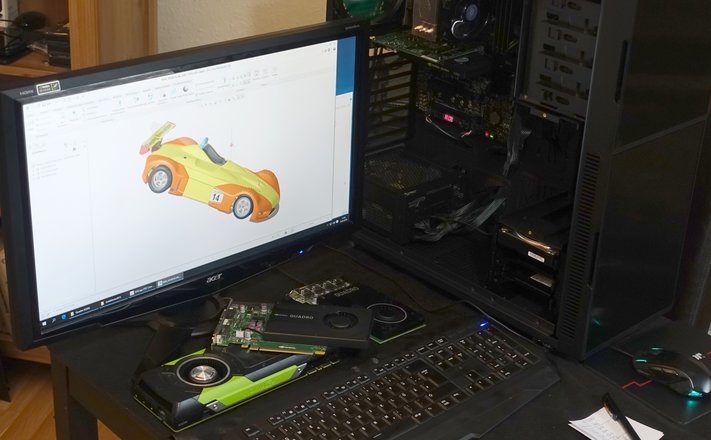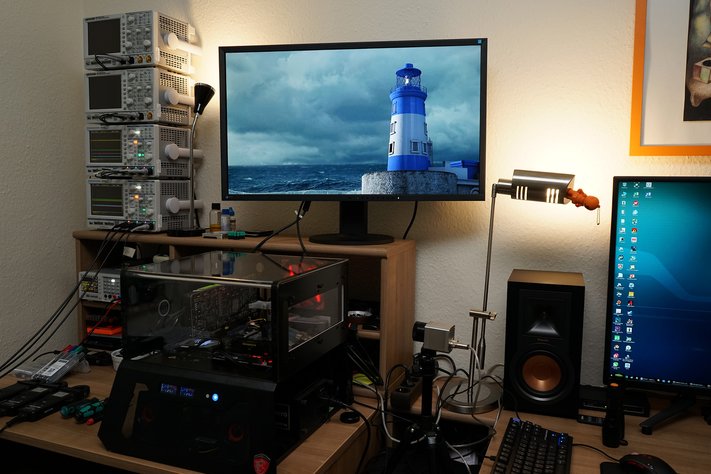Here and now we deal with workstation performance in CAD (real-time display). We cover gaming performance, rendering, and pure compute in other parts of these CPU charts:
- Part 1 – Gaming Performance
- Part 2 – Workstation Graphics Performance
- Part 3 – Rendering, Computing and Power Consumption
Whether 2D or 3D output – the requirements in the (semi-) professional field are very diverse. Depending on the standard software used or the program suites, you will come across very long-lasting software products with an often multi-year usage cycle. This also means that many (older) programs are more likely to (still) rely on a high IPC and hardly scale properly over many threads, or in return also perform calculations in parallel, the load of which is so high that in the case of incorrectly used CPUs, the performance of the graphics output suffers disproportionately.

For many areas, it no longer necessarily has to be an Intel Xeon, because often the consumer version is enough if you can do without ECC RAM. With the budget thus saved, there is almost always more room for manoeuvre for the graphics hardware.
The test setup
We have already described the test methodology in the basic article "How we test graphics cards, as of February 2017" in great detail and so we now only refer to this detailed description for the sake of simplicity. So if you want to read everything again, you are welcome to do so.
In this case, only the hardware configuration with CPU, RAM, motherboard, as well as the new cooling is different, so that the summary in table form quickly gives a brief overview of the system used here and today:
| Test systems and measuring rooms | |
|---|---|
| Hardware: |
AMD Socket AM4 MSI X370 Tomahawk 2x 8 GB G.Skill TridentZ DDR4-3200 RGB AMD Socket SP3 (TR4) AMD Socket AM3+ Intel Socket 1151 (Z270): Intel Socket 2011v3: All systems: 1x 1 TByte Toshiba OCZ RD400 (M.2, System SSD) |
| Cooling: |
Alphacool Ice Age 2000 Chiller Alphacool Ice Block XPX Thermal Grizzly Kryonaut (for cooler change) |
| Monitor: | Eizo EV3237-BK |
| Housing: |
Lian Li PC-T70 with expansion kit and modifications Modes: Open Benchtable, Closed Case |
| Power consumption: |
non-contact DC measurement on the PCIe slot (Riser-Card) non-contact DC measurement on the external PCIe power supply direct voltage measurement at the shunts, the respective feeders and the power supply Reading out the motherboard sensors 2x Rohde & Schwarz HMO 3054, 500 MHz multi-channel oscillograph with memory function 4x Rohde & Schwarz HZO50, current togor adapter (1 mA to 30 A, 100 KHz, DC) 4x Rohde & Schwarz HZ355, touch divider (10:1, 500 MHz) 1x Rohde & Schwarz HMC 8012, digital multimeter with storage function |
| Thermography: |
Optris PI640, infrared camera PI Connect evaluation software with profiles |
| Acoustics: |
NTI Audio M2211 (with calibration file) Steinberg UR12 (with phantom power for the microphones) Creative X7, Smaart v.7 own low-reflection measuring room, 3.5 x 1.8 x 2.2 m (LxTxH) Axial measurements, perpendicular to the center of the sound source(s), measuring distance 50 cm Noise in dBA (Slow) as RTA measurement Frequency spectrum as a graph |


































Kommentieren